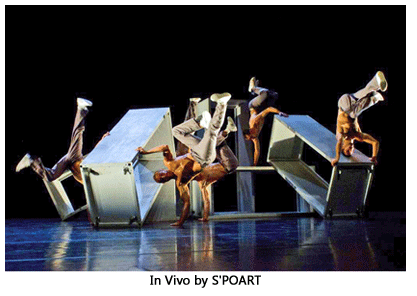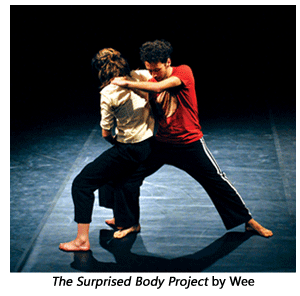- Prelude
- Editorial
- Subodh's 'return home'
- A Conversation with TV Santosh
- It's a War Out There
- Raqib Shaw
- Illusions in Red from a very British Indian Sculptor
- Stand Alone: Shibu Natesan
- Reading Atul Dodiya
- Bharti Kher: An Obsession for Bindis
- Bose Krishnamachari
- The Image - Spectacle and the Self
- From Self-depiction to Self-reference: Contemporary Indian Art
- GenNext: The Epitome of New Generation Art
- Kolkata's Contemporary Art A Look in the Mirror
- Innovation Coalesced with Continuing Chinese Qualities
- Kala Bhavana-Charukala Anushad Exchange Program
- Montblanc Fountain Pens
- Dutch Designs: The Queen Anne Style
- Bangalore Dance Beat
- Decade of change
- Distance Between Art & It's Connoisseur
- What Happened and What's Forthcoming
- 3rd India Art Summit
- New Paradigms of the Global Language of Art
- Black Brown & The Blue: Shuvaprasanna
- Art Events Kolkata
- Musings from Chennai
- Art Bengaluru
- Printmaker's Season
- Mumbai Art Sighting
- The Pause of Profound Stillness
- Previews
- In the News
- The Rebel Queen: An icon of her own times yet looked down upon
ART news & views
Bangalore Dance Beat
Volume: 3 Issue No: 14 Month: 3 Year: 2011
by Franck Barthelemy
 On the occasion of the 5th edition of the Attakkalari India Biennale, I had a conversation with Jayachandran Palazhy, the founder and now Artistic Director of Attakkalari Centre for Movement Arts (Bangalore), a non- profitable organisation. Jay and his team brought to us performers from all over the world. The Attakkalari Repertory opened the 10 day festival with a very lively performance, Corporeal Kaleidoscope, in which various elements of the Indian rich history of dance, from Bharatanatyam to Kalaripayattu was enhanced with technology. 15 dancers were on the main stage. Some found the performance busy and messy. I found it rejuvenating and energetic. If sometimes a bit of coordination would have made it better, overall, I enjoyed the combination of the live performance with the video performance. The concept was interesting and brought to the audience a breeze of life through the so many video screens.
On the occasion of the 5th edition of the Attakkalari India Biennale, I had a conversation with Jayachandran Palazhy, the founder and now Artistic Director of Attakkalari Centre for Movement Arts (Bangalore), a non- profitable organisation. Jay and his team brought to us performers from all over the world. The Attakkalari Repertory opened the 10 day festival with a very lively performance, Corporeal Kaleidoscope, in which various elements of the Indian rich history of dance, from Bharatanatyam to Kalaripayattu was enhanced with technology. 15 dancers were on the main stage. Some found the performance busy and messy. I found it rejuvenating and energetic. If sometimes a bit of coordination would have made it better, overall, I enjoyed the combination of the live performance with the video performance. The concept was interesting and brought to the audience a breeze of life through the so many video screens.
Some of the world leading choreographers added their part of the magic to the festival. Nicole Seiler, Alesandra Seutin, Khamlane Halsackda, Omar Rajeh, S'poart, Hobin Park, Anmar Taha or Frikar achieved wonders and managed to move the audience. They are all part of Jayachandran's very extended family.
Jay set up Attakkalari in 1992 and set it up to Bangalore in 2001. He opened "a dance house" i.e. a resource centre where teaching, training and researching are the pillars of the house. The 35 employees at the centre manage 3 dance studios, exchange programmes with other dance schools around the world and residency programmes for dancers and choreographers.  They have set up a diploma course. And the Attakkalari troupe operates from their premises. Besides performances in India, they have toured the world, Venice, Munich, Monaco, Yokohama are only a few to quote. In Jay's universe, legendary names resonate, from Chandralekha to Pina Bausch, William Forsythe to Joseph Nadj, Saburo Teshigawara to Pierre Boulez. If he had not worked with them, he had studied them, paid tribute to them or danced on their music. Jay is now preparing Aayodhanam, a new performance set to tour Europe from October this year. He explores with his troupe the idea of the body in martial art and how can martial arts have a social impact.
They have set up a diploma course. And the Attakkalari troupe operates from their premises. Besides performances in India, they have toured the world, Venice, Munich, Monaco, Yokohama are only a few to quote. In Jay's universe, legendary names resonate, from Chandralekha to Pina Bausch, William Forsythe to Joseph Nadj, Saburo Teshigawara to Pierre Boulez. If he had not worked with them, he had studied them, paid tribute to them or danced on their music. Jay is now preparing Aayodhanam, a new performance set to tour Europe from October this year. He explores with his troupe the idea of the body in martial art and how can martial arts have a social impact.
The troupe recruits a lot of Kalaripayattu trained artists. I met Santosh, 27, one of them and talked about his life since he joined Attakalari. First, he explained to me the meaning of Attakalari. It is made of two words, attam, performance, and kalari, arena. When he joined a kalaripayattu school, he joined a world within the world. Santosh talked about the discipline of the practise. The arena, 42x21 feet in size, is like a temple he said. He starts his training every day the same way other dancers used to start centuries ago, with a set of animal postures, elephant, lion, horse, peacock, fish, wild boar, cat and rooster. Though deep rooted in the tradition, Santosh, is a dancer of the 21st century. He likes dancing on other choreographies and finds no border in contemporary dance. The body language allows him to create emotions. Santosh made his debut as a choreographer at the Biennale with Paadhayem. He described the experience as exciting and challenging but also stressful. Looking at the audience that day, I felt Santosh started well. He indeed managed to move the audience. I can only wish him a long career as a choreographer.
Along with Santosh, many other new choreographers offered us a glimpse of their talents. Omar Rajeh (Lebanon) with Facing the Blank Page surprised many of us. The silence, the saturated white light, the loud music, and the pace of his movements, sometimes slow and suddenly fast, everything was unexpected. Maybe Omar, as the title suggested, wanted to take us through the emotional journey of a writer facing a blank page. To that extend, well done.
Attakalari spoiled the audience with a lot of very good shows. I will only mention one of them that I particularly enjoyed. In Vivo, by the French company S'poart. When I read the programme, I had to confess that the two words hip-hop put me down and I was not at all excited to go to the show. I am so glad a few dancers forced me to make it because In Vivo was a great show, maybe the best I had seen during the Biennale. The seven dancers of this French troupe from La Roche sur Yon, a very small city in France, danced on a contemporary music track, Everlasting by Julien Camarena. It was far from the hip-hop universe. The choreographer gave each of the dancers a human size box on wheels. They used them wonderfully to recreate on stage the feeling of an urban space sometimes filled with romance, sometimes filled with violence. Though three of the dancers were not French but Russian, the group cohesion on stage was beautiful. The troupe was one throughout the show. Hats off!
Let's all start visiting Attakalari web site regularly not to miss the preparation of their next show and let's look forward to the premiere in Bangalore before they go abroad. Let's also not miss all the invited dancers and choreographers who come regularly to Bangalore to mingle with the Attakalari troupe. Lots of surprises are in the box!